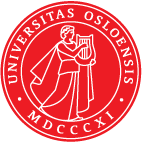Chapter 4¶
Important topics of Chapter 4 [Whi06].
Displacement thickness
Momentum thickness
Flat plate integral analysis
Boundary layer equations
Flow separation
Blasius solution
Falkner-Skan solution
Suggested assignments chapter 4¶
Written assignments chapter 4¶
Derive the laminar boundary layer equations¶
Derive Eq. (4-32) in [Whi06] starting from the Navier-Stokes equations.
Derive nonlinear similarity solutions for boundary layers¶
Derive both the Blasius and Falkner-Skan equations.
Computer assignments chapter 4¶
Implement nonlinear solvers¶
Implement a nonlinear solver for the Blasius equation. Do the same for the Falkner-Skan equation and vary the parameter \(\beta\) as shown in Fig. 4-11 in [Whi06]. What happens at \(\beta=-0.19884\)? At \(-0.19884 \leq \beta \leq 0\) there are according to White at least two possible solutions. One solution is shown in Fig. 4-11a in White. Another solution shows negative values for \(f^{\prime \prime}(0)\), thus indicating backflow close to the wall. Using different initial guesses for the solution it should be possible to obtain both solutions.
Compute the flow past a rotating cylinder.¶
Use a rectangular domain \(\Omega = [0, 6] \times [-1, 1]\) and place the cylinder at \((x,y) = (1,0)\) with a radius of 0.25. Assume at first steady creeping flow, walls at \(y = \pm 1\) and set the velocity on the left hand side (\(x=0\)) to \(1-y^2\). Set the cylinder to rotate against the clock at a constant speed of 1. Compute lift and drag forces on the cylinder. Reverse the direction of the rotation and recompute lift and drag. Now include convection and solve the Steady (nonlinear) Navier-Stokes equations for the same problem. Set the rotation to oscillate with an angular speed of \(\sin \pi t\) and compute the unsteady creeping flow past the cylinder. Do the same for unsteady Navier-Stokes and attempt to find the von Kármán street for a steady cylinder.
